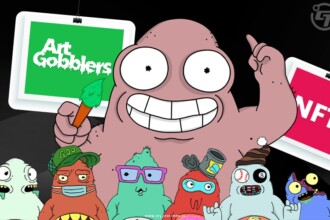Azuki is diving deep into the web3 space, with the launch of its new product, Physical Backed Tokens – $PBT. The Japanese anime themed NFT project has found a way to link physical items with digital tokens on Ethereum blockchain, enabling on-chain ownership of real-life assets.
In this article you will find how Azuki plans to revolutionize the NFT space with the physical backed tokens, $PBT.
What are Physical Backed Tokens, or PBTs?
Physical Backed Tokens (PBT) is an open source token standard which ties a physical item to a digital token on the Ethereum blockchain. PBT enables brands and creators to develop next-generation storytelling and experiences for their communities.
It isn’t new to create a digital token that represents a physical object, but maintaining that link over the object’s lifespan is still challenging. The PBT standard is a solution which enables decentralized authentication and tracking of the full ownership lineage of physical items, all completely on-chain and without a centralized server.
Thus, Physical Backed Tokens introduces true trustless authentication. Everyone is free to authenticate, validate, and build experiences on top of this technology. No one has exclusive rights to ownership of the objects.
Furthermore, the repo is open sourced and the EIP submission is already in progress.
The line between physical and digital is blurring, and Chiryu labs, the team behind Azuki NFTs, has been working extensively to link them together.
What is the Bean chip?
Bean chip is a cryptographic chip that enables new experience ‘scan-to-own’. It is what you can call a Blockchain Enabled Authentication Network (BEAN) Chip that self-generates an asymmetric key pair.
What is Scan to own?
You can mint or transfer a PBT to a different wallet by scanning the chip with your phone, ergo scan-to-own. The PBT verifiably authenticates the physical object and links it to a digital token in the owner’s preferred wallet. This allows the current owner of a physical item to also own the PBT.
How does PBT transfer work?
If the physical objects get sold or gifted to a new owner, the subsequent owner can then scan-to-own the same physical object. Just a single scan can transfer the PBT from the previous owner to the new owner in a decentralized manner.
What are the Use Cases of PBT?
At present Physical Back Tokens can be used for:
- Decentralized authentication of goods: Authenticate a physical item by simply scanning it with your phone.
- Tracking ownership lineage of physical goods: Verifiably prove the past and current owners of the item, enabling brands to build product experiences for their audiences.
- Using physical products to create digital experiences: Owning a digital token can unlock physical drops, and now owning a physical product can unlock digital experiences.
PBT lays the foundation for new experiences and storytelling. As a holder, you can build a collection that captures both the digital and physical worlds, trade authenticated items, as well as participate in real life quests. This is just the tip of the iceberg but you gotta wait and watch out for all the new experiences that are possible through this standard.
For more NFT insights and developments, subscribe to the Crypto Times.







